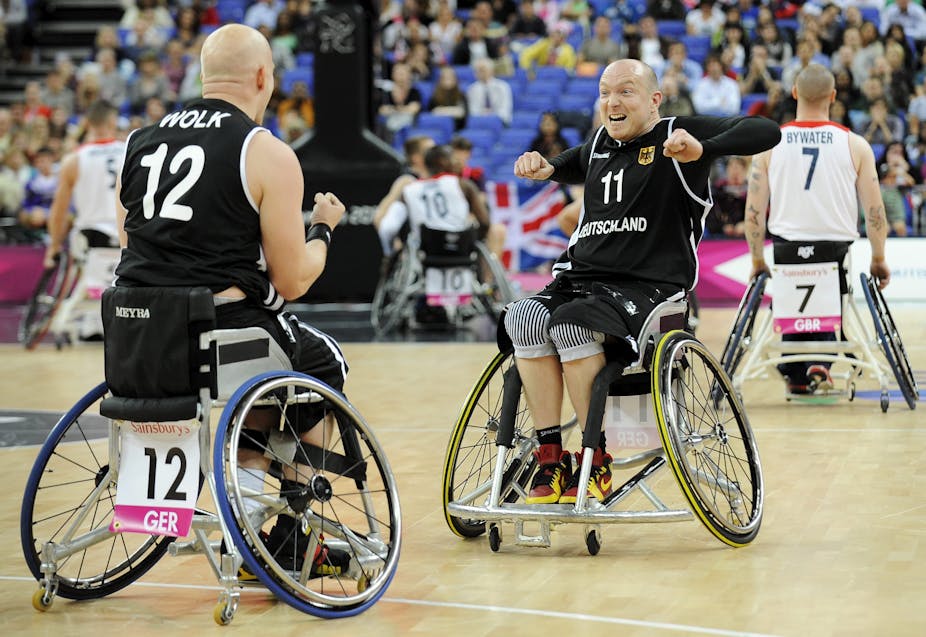It’s been a mystery to me, over many years spent watching sporting events such as the Paralympics, just how disability is classified. With the London Paralympic Games now well underway, I’m sure I’m not alone.
If athletes, coaches and administrators have problems understanding the application of the classification process – and judging by recent conversations I’ve had, they do – what hope do armchair spectators have?
Many is the time I have listened to a commentator at a Paralympic or Commonwealth Games struggle to communicate clearly the classification system and how certain athletes can compete with other athletes of a different classification in the same event/discipline.
Let me state, though, that this lack of understanding of disability classification hasn’t stopped me enjoying the sporting event for what it is: athletes at the top of their craft and ability, fighting it out with others at the same level.
Nor has this lack of awareness stopped me cheering at the top of my voice for the athlete in the green and gold or from feeling immense pride when Advance Australia Fair is played at a medal ceremony.
In fact one of my favourite sporting moments was attending the Sydney Paralympic Games in 2000 and experiencing a world-class sporting event with a terrific atmosphere and competition that is second-to-none.
Of course there is a wealth of information out there about the mysteries of the classification system, including the Australian Paralympic Committee website and an “Explainer” article published recently on The Conversation.
(To recap, the classification system exists for a simple reason: to allow the grouping of similar athletes with a hope that an athlete’s disability has less of an impact on the outcomes of the competition.)
Sadly, I’m not sure many people know the difference between impairment – which refers to the loss or abnormality of body structure – and disability – the degree of difficulty someone experiences as a result of their impairment.
Few people probably know about the four types of disability covered by the classification process either. These are for athletes with:
- an amputation
- celebral palsy
- vision impairment or blindness
- spinal injuries or other physical disabilities.
And how many people know that every Paralympian at London has gone through a rigorous and regular assessment of their disability and that even when they reach the Games the games assessors might well assess their disability to a different classification than their national one?
(This happened to a friend of mine at the Seoul Paralympics and has happened at London already.)
These misconceptions bring me to what is probably the bigger issue: a general lack of understanding and appreciation about what it means to be disabled.
I don’t think many people truly appreciate the skill required to play a sport with a disability. Having played wheelchair basketball and floor ball (also known as sitting volleyball) on a number of occasions, I can tell you it really is hard work to control a chair, catch or shield the ball from the opposition, move into position without freedom of movement and shoot without being able to use the leg-lift that standing events of the sport allow.
And to do this when you can’t see the ball clearly or hear your teammates scream instructions would doubtless add another level of complexity to an already tough experience.
Playing these sports is hard enough; competing at a Paralympic level is something else entirely.
Sure, we’ve taken great strides in recent years to adopt the approach that discrimination is unlawful (the Disability Discrimination Act 1992) and that we need to ensure all activities allow equal opportunities (e.g Victorian Equal Opportunity Act 2010), but much work is still to be done to even the playing field.
In comparison to Olympic athletes Paralympic athletes do not enjoy equality of structures, resources or even media air time.
Quite simply, athletes who are representing their country at the London Paralympic Games deserve a lot more respect and support than they currently receive. So how can we improve the general public’s understanding of Paralympic sport and the classifications of the athletes?
Personally I think doing is a far more powerful learning tool than watching. I would make it compulsory for all school children to experience playing at least one Paralympic sport. I would also ensure that the YouTube videos on the Australian Paralympic Committee website, entitled What is Paralympic Sport? (embedded near the top of this article) and Who competes in Paralympics Sport? (embedded above) should be shown at the beginning of TV reports in a bid to quickly educate the viewer.
Above all we need to appreciate these athletes are competing at the top of their ability, and at the top level. We mightn’t appreciate all the nuances around classification or understand what it’s like to be disabled, but we should take pride in supporting those that are competing for their country.

